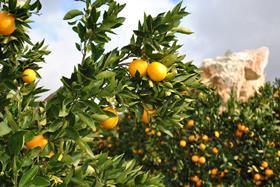
The South African summer citrus campaign in the US has got off to an auspicious start, with a lack of availability of home-grown fruit creating strong demand. The first vessels arrived in Newark this week carrying 90 tonnes of clementines and Navels, marking the start of the 15th season for South African summer citrus in the US.
“For a variety of reasons, many weather related, domestic citrus supplies in the US are at more reduced levels than in seasons past,” said Suhanra Conradie, CEO of the Western Cape Citrus Producers Forum (WCCPF). “To meet this immediate demand, we expect to send nearly twice as much citrus at this time as compared to initial shipments of 2013.”
Around 15 per cent of this year’s shipment volume will be containerised, arriving at the port of Newark, New Jersey, while conventional vessels dock at Philadelphia’s Holt Terminal in Gloucester City, New Jersey. Shipments will arrive from South Africa every ten days through to October. The first conventional vessel will arrive in late June, with three additional container vessels arriving in the interim.
“Easy peelers better known in the market as clementines are in high demand in the US and this initial shipment brings more of those than Navels,” said Conradie. “That will adjust later in the season when the volume of Navels increases. Star Ruby grapefruit and Cara Cara oranges begin arriving in late June.”
Journey times have been cut this year thanks to a pilot programme reducing the amount of time fruit is subjected to cold treatment from 24 to 22 days. This follows a study which shows that 22 days is sufficient to assure no pests can arrive with the fruit.
The agreement results from discussions earlier this year with the USDA’s Animal & Plant Health Inspection Service (Aphis) and South Africa’s Department of Agriculture, Forestry & Fisheries (Daff). Aggressive and consistent efforts by South African citrus growers have reduced the incidences of false codling moth in fruit to less than 0.05 per tree in 2014 as compared to 0.19 in 2013 and 0.48 in 2012.
“The two agencies have been committed to our export programme in the US and work bilaterally as well as with the growers to assure compliance,” said Conradie. “A unique aspect to our programme is that the citrus is subject to pre-clearance in Cape Town before export to the US where it then undergoes additional inspection on arrival. The reduction by two days means the fruit is available in the marketplace that much faster and will have a longer shelf-life once in the market.”
This year’s bumper crop means greater volumes will be available for the US market. Normal weather conditions to date have enabled harvesting to proceed without interruption. “Weather and climate conditions cannot be underestimated when it comes to the taste and appearance of our fruit,” Conradie continued. “South Africa’s summer heat contributes to the sweet taste followed by colder temperatures which enable the fruit’s color to brighten orange.”
She noted that strong relationships with US importers and retailers and close collaboration before and throughout the season assure the preferred sizes and volumes are shipped at the correct market time. “Smaller fruit yields well for the growing popularity of bagged fruit in the US market,” she explained. “In all cases, fruit exceeds the internal quality requirements and is packed to assure it exceeds the strictest of fruit safety regulations.”
The programme began in 1999 with 50 tonnes shipped during the initial season and since then it has grown to around 41,000 tonnes per year. South African citrus exported to the US is grown primarily in the Western and Northern Cape regions.
The WCCPF. facilitates logistical, marketing and sales support coordination of products for its members. Its mission is to maintain and expand its role as the preferred and reliable supplier of safe summer citrus for the US.



